Calling all art lovers! Stunning Mattia Preti collection on display at new MUZA Gallery
So exciting! MUZA in Valletta has put together what is the most extensive public gathering of the famous Mattia Preti’s work. This area, one of five new galleries, was recently opened to the public and concludes the pending work in extensions to the European and Empire narratives.
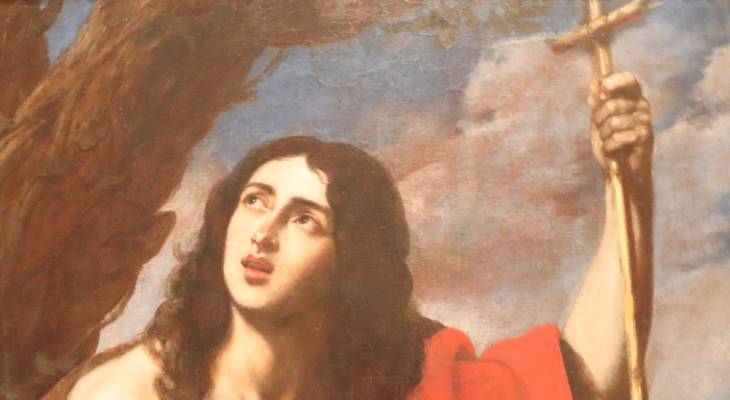
Some of the foremost artists in the 17th and 18th centuries were lured and secured by the prestige and contacts made possible by the presence of new patrons such as the Order of St. John. ‘Mattia Preti: An Italian Artist in Malta’ shares the beauty of the renowned artist’s works, ready to be awed at by the public.
About Mattia Preti
Preti, who arrived on the Islands in the 1650s and established a career that spanned 40 years, managed to significantly impact Baroque Art and other Maltese artists and foreign artists working locally. Settling in Valletta, where he opened a successful bottega, Preti set his sights on escaping his lowly Taverna-born origins and viewed the Order of St. John as his fast track to nobility.
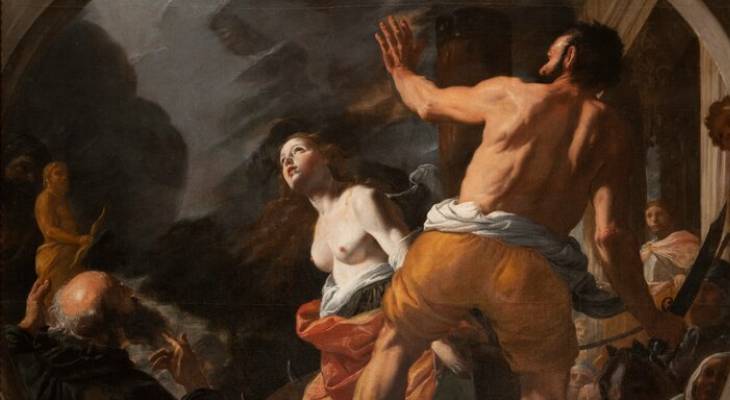
In the 17th Century, being a painter was considered manual labour, something which always irked the ambitious young Italian artist, eager to impress. Preti began by ingratiating himself with the Auberge d'Italie through his presentation piece, 'The Martyrdom of St Catherine of Alexandria.' Various art historians hypothetically link this to the superb canvas in the national collection. An X-Ray interpretation panel in the gallery reveals the strategic choice of subject -the patron saint of the Auberge- to be an overpainting of an earlier martyrdom of St. Paul. Preti was soon flooded with commissions and was eventually promoted to 'Knight of Grace' in exchange for working for free to embellish St. John's Co-Cathedral.
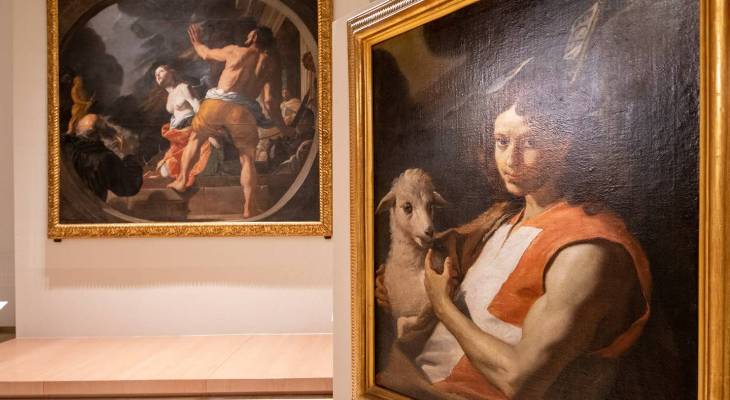
The Preti Halls at MUZA
Considered the 'Crown Jewels' of the National Collection of paintings, the Preti Hall contains the most extensive public gathering of Preti masterpieces under one roof, other than the Co-Cathedral of St. John.
The gallery follows Preti throughout the different phases of his career. From the vivid colours and bold movement executed in the spirit of Baroque triumphalism of his early years, to the less detailed, darker, and more sombre work of his mature period. Compared to the brilliant crimson and intense blues of a young 'St. John the Baptist,' in the restricted palette and broader brushstroke of 'St. Sebastian', for instance, Preti uses the background preparation as a medium tone for his canvas rather than painting over it.
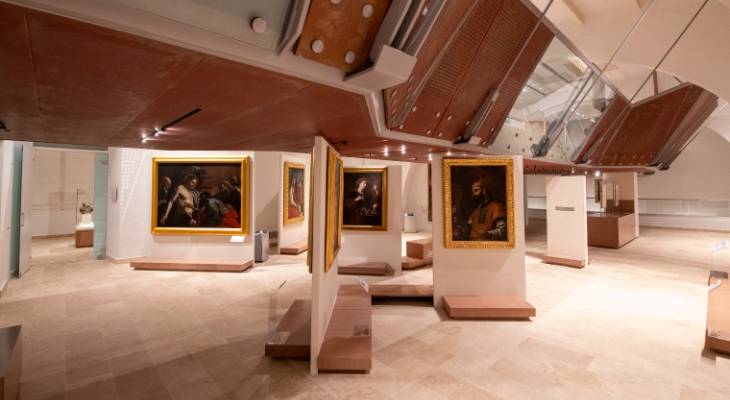
Art lovers are going to love this! A few of the preparatory sketches for the vault of St. John's Conventual Church are on display for the first time. Interestingly the oil and paint splotches point to the fact that he must have had these sketches close by at hand to refer to when he was working.
Upon entering the hall, one immediately encounters a self-portrait of Mattia in the guise of Apelles painting Campaspe. This is ascertained by a mention in chronicler de Dominicis' biography of the artist. The picture, which is a fragment, is divided into two parts; the other half, also attributed to Preti, is located within the Palazzo Chigi in Ariccia.
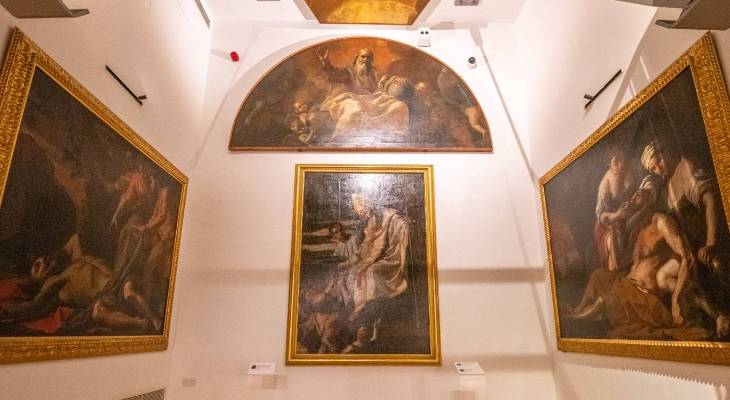
Besides the Order's patronage, Mattia Preti also produced work for many local churches. The gallery has set up an arrangement from different Preti pieces within the National Collection that reflects the set up one usually expects to find in a church, including a titular painting, a lunette, a decorated ceiling, and two lateral paintings.
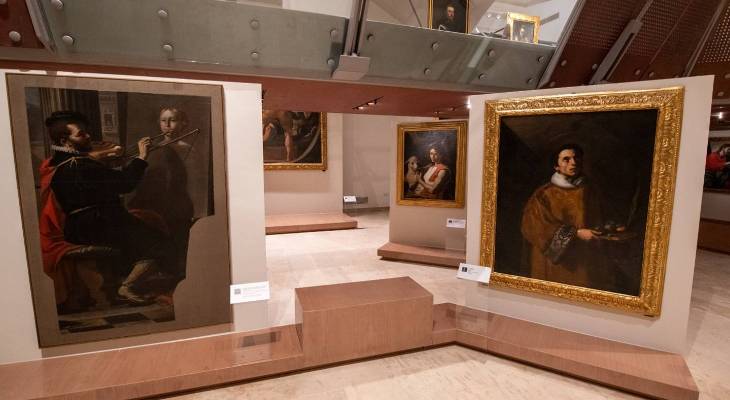
Preti & other artists of his time
Although the lead character is undoubtedly 'il Cavaliere Calabrese' as Preti came to be known, the focus is not exclusively on the artist himself. The gallery additionally features other artists whose work also arrived in Malta, at the same time Preti was active here, amongst them three Spanish artists: Jusepe de Ribera, Pacecco de Rosa, and Pedro Nuñez de Villavicencio. Meanwhile, although overshadowed by Preti, Maltese artists Giuseppe d'Arena and father and son team Stefano and Alessio Erardi managed to carve out a niche for themselves.
Whereas Mattia Preti was a product of the Southern Italian school of art, Stefano Erardi was inspired by the classical school of Bologna, which is evident in his composition, similar to elements in other artwork of the day. Two separate portraits by Erardi of brothers Don Giuseppe and Don Gio Battista Desain, originally commissioned as a pair, were separated by inheritance wills. Gio Battista's portrait was purchased by the Museums Department in the mid 20th Century, and Giuseppe's in 2020 by Heritage Malta. Thus the two officials of the Inquisition in Malta now hang together, reunited once more in the new gallery.
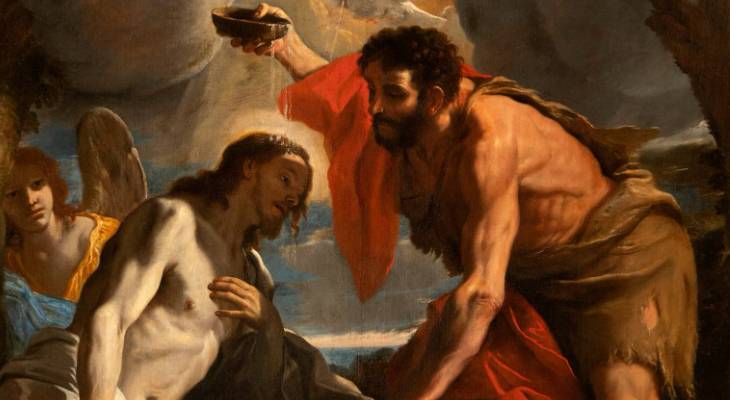
The Preti gallery, along with four others containing 18th and 19th-century decorative arts as well as works by Antonie Favray and Giuseppe Cali' are housed in what was the 'Camerone' or refectory, of the Auberge. Good use was made of the museum's closure during the early part of the Covid-19 pandemic to finalise the displays and to complete the construction of a viewing platform, that maximises the space at hand.
This project is part-financed by the European Union under the European Regional Development Fund – European Structural and Investment Funds 2014-2020. Information supplied by Warren J. Bugeja, Executive Communications Officer at Heritage Malta.